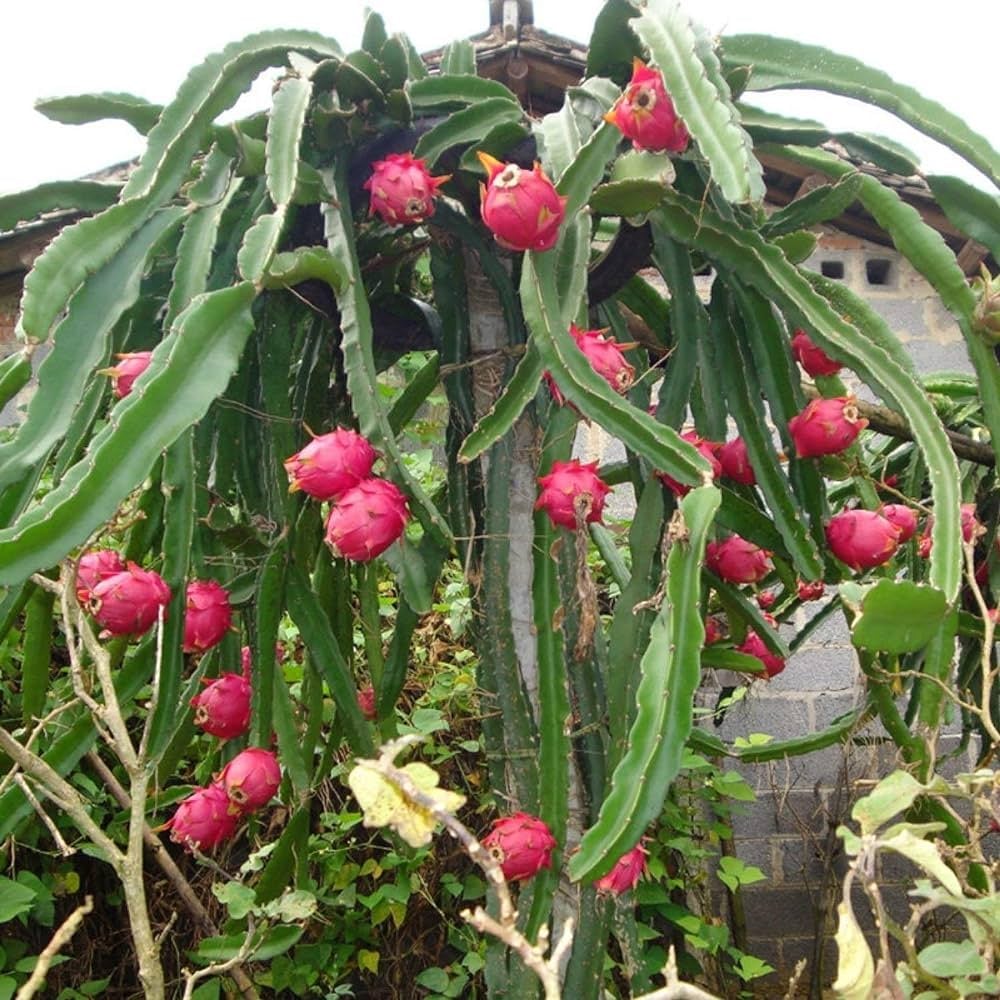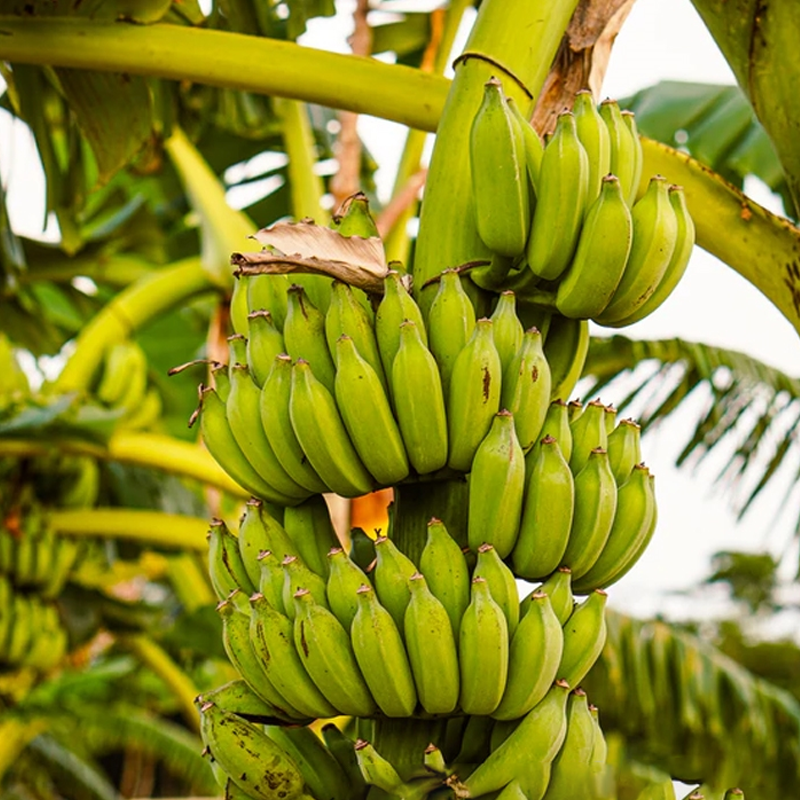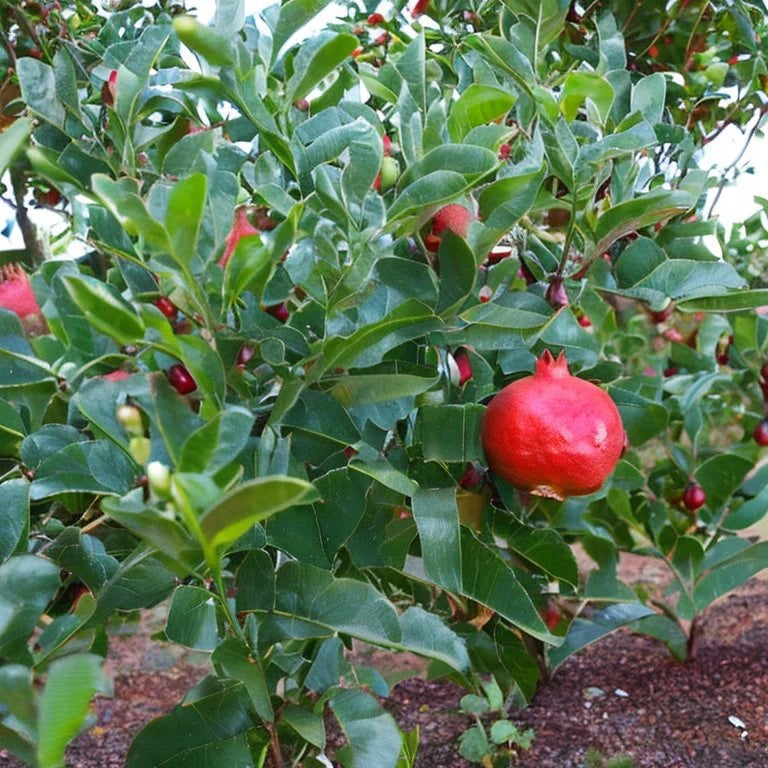


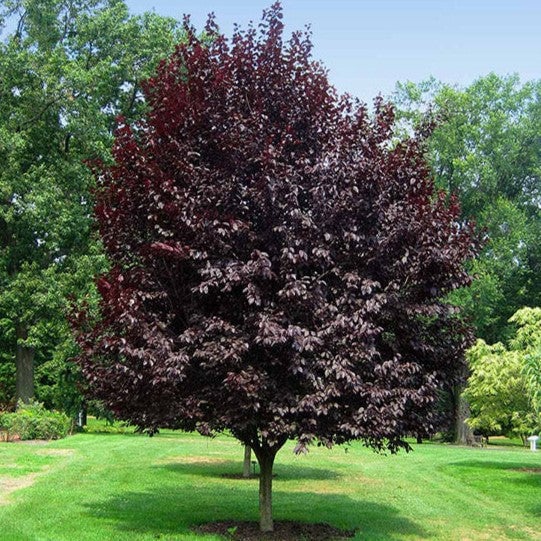
Cistena Plum 3-4'
Vibrant purple foliage adds color
Low-maintenance and hardy plant
Ideal for small garden spaces
Thrives in
ZONE 2ZONE 3ZONE 4ZONE 5ZONE 6ZONE 7This plant ships:
Ships Week of May 5thCistena Plum - Prunus X Cistena
Cistena Plum is an ornamental tree with dark purple foliage and pink blossoms in spring, adding a pop of color to the landscape. It is a purple-leaf cultivar known for its stunning reddish-purple foliage and small edible fruits.
Also called the purple leaf sand cherry, it is a unique hybrid tree made by crossing several types of decorative cherry trees. This fascinating heritage results in a medium-sized tree with shockingly purple-hued leaves. The entire tree is covered in dense, dark-colored leaves, which can range between deep maroon, dark burgundy, olive green, and ruby red. The unusually bright color makes it stand out from most other trees and shrubs.
Ways to Incorporate Cistena Plum Into Your Landscape
Purple-leaf sand cherry trees are medium-sized trees reaching about 10 feet tall. Depending on how you prune them, they can have a short, thick trunk with a wide canopy or a shrub-like appearance with several thin stalks. This versatility makes them popular with homeowners who want accent trees for their property. A few of them situated in a circular flowerbed can look quite dramatic. Bushier versions also work pretty well as a border or privacy hedge.
Cistena Plum Has Gorgeous Blooms In Spring
Sometime in spring, they bloom. This results in a thick coating of cherry blossoms along each stem and branch of the tree. The flowers are white with a purplish center that contains a spray of purplish stamens. Some variants can look pink due to the blend of purple, red, and white within each flower. The pale color provides an exciting contrast to the dark leaves of the rest of the tree. The petite flowers are usually just an inch or two in width. They drop a fine shower of small, rounded petals as they grow.
After providing delicate flowers in spring and colorful leaves in summer, they undergo another transformation in autumn. It begins to grow small, red berries that cluster along each branch. As the months progress, these berries grow into round, glossy fruits that add even more visual appeal to this tree. Leaves darken to a bronze shade in the fall, providing a charming backdrop for the bright reddish-purple fruit.
The best thing that you will need to do for your plant is to ensure that it is watered during the right time of the year when it is growing. It should be a notch more than saturated but not waterlogged. Early spring is a good time to apply a balanced fertilizer rated at N-P-K 10-10-10, once in 6-8 weeks.
It is noteworthy that Cistena plums do not independently pollinate or fertilize; thus, they require pollinators. More fruits are produced when two or more trees are planted to flower simultaneously.
Compost manure can be used to enhance the quality of the ground and hence enhance the number of fruits produced. However, it should be pointed out that maintenance is a critical factor in the continued operations of the plant.
This Is How Your Plants Will Look upon Delivery

Bloom Season
Spring
Bloom/Foliage Color
Pink
Height at Maturity
Over 25 Feet
Care
Cistena Plum thrives in well-drained soil and prefers regular watering. Prune annually to maintain shape and remove any dead or diseased wood. Fertilize in early spring to support growth and flowering. Watch for pests and treat them promptly if needed.
Plant Reproduction
Cistena Plum spreads through suckers and seeds, forming dense clusters
Plant bare root trees during the dormant season in early spring or late fall (November through April). Dig the hole twice as wide as the roots so the soil is well-drained. Position the tree so the root flare is at or just above ground level. Fill the hole back with the soil you dug from and water. Maintain soil moisture, especially in the tree's early years, by providing deep, regular watering. Apply a 2-4 inch mulch away from the trunk at the base to retain moisture and suppress weeds. Prune trees during the first few seasons to establish strength and resilience, remove damaged branches, and continue maintenance pruning as the tree matures. Regularly inspect for pests and diseases and apply integrated pest management practices. Protect young trees from mechanical damage and extreme temperatures with tree guards, and stake them if necessary for support, removing the stakes after one or two years.
Shipping date depends on the date displayed and chosen when you order from the product's page.
We only accept returns on plants verified dead. If you think your plants have died, we offer a 1 year warranty, please use this File a Claim Link to verify dead plants and start with return warranty process.





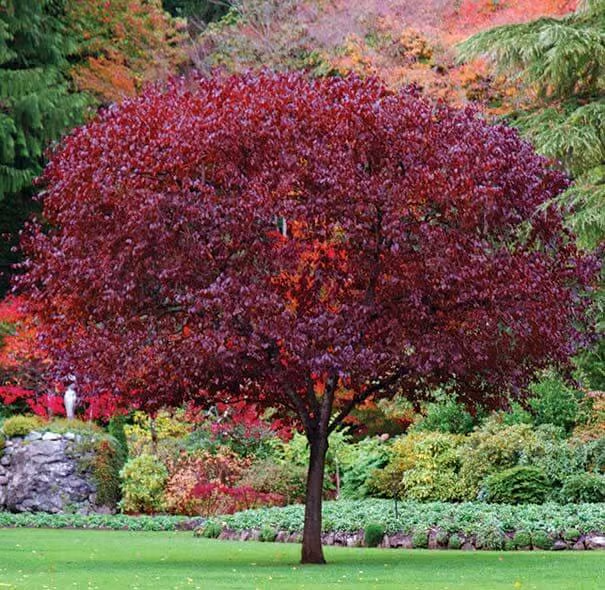
Spectacular Spring Blooms:
The Cistena Plum tree produces striking deep purple blossoms in spring, offering a dramatic and vibrant display that enhances your garden’s beauty. Its floral show is both eye-catching and elegant.
Compact and Versatile:
With its manageable size, the Cistena Plum is ideal for smaller gardens, courtyards, or urban settings. It fits well in confined spaces while still providing impressive visual appeal.
Unique Foliage Color:
This tree features rich, dark purple foliage that maintains its captivating color throughout the growing season. The unusual leaf color adds a distinctive touch to any landscape.
Attracts Pollinators:
The blooming Cistena Plum draws bees, butterflies, and other pollinators, contributing to a vibrant and healthy garden ecosystem. Its flowers support local wildlife and increase garden biodiversity.
Caring Tips
How do I care for my Cistena Plum 3-4'?
Each box contains detailed care instructions and information about your product. But here's the basics.
Care Tips
Cistena Plum thrives in well-drained soil and prefers regular watering. Prune annually to maintain shape and remove any dead or diseased wood. Fertilize in early spring to support growth and flowering. Watch for pests and treat them promptly if needed.
Light Requirements
The Cistena Plum thrives in full sun to partial shade. It should acquire at least 6 hours of direct sunlight daily for optimal growth and vibrant foliage. In shaded areas, it may not flower as profusely.
Hardy Planting Zones
2 • 3 • 4 • 5 • 6 • 7
Header
Use this content to share information about your store and products.
Frequently Asked Questions
How often should I water my plants?
How do I know if my plant is getting too much or too little sunlight?
What should I do to prepare my plants for winter?
What are the signs that my plant needs fertilizing?
How can I prevent pests from damaging my plants?
How do I choose the right plant for my climate zone?



